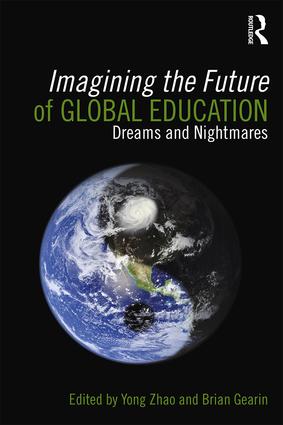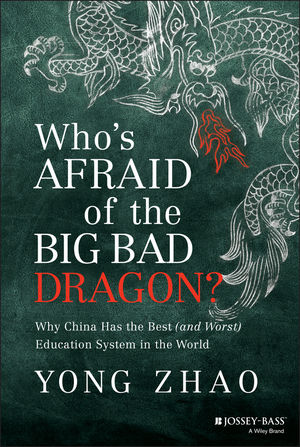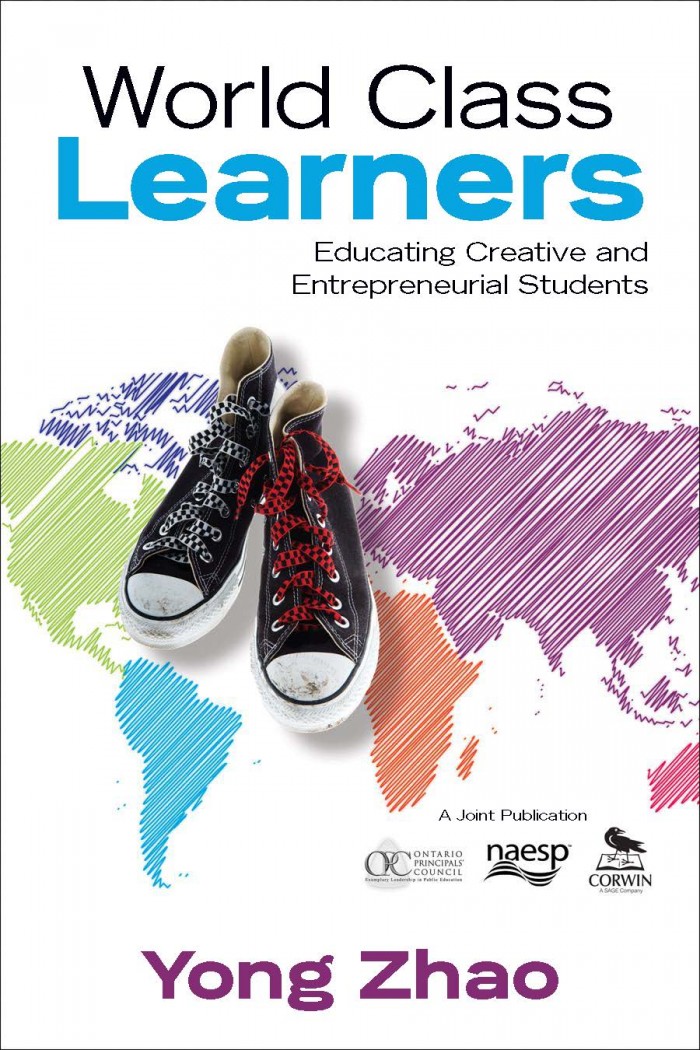A Bold Education Experiment: What We Should Learn From China
A Bold Education Experiment: What We Should Learn From China
World’s longest high-speed rail networks, fastest trains, fastest computer, second largest economy, and #1 standing in international tests are just more recent evidence many outside observers cite to show why the rest of the world should learn from China’s education system and what helped make “the Chinese Tiger Mom” story a best seller. But as I have written on this site and in my book, Catching Up or Leading the Way, the glorification of China’s education is ill founded and attention misplaced. No question that there is a lot to learn from China, but when it comes to education, what is worth learning is not what China did but what it is trying to do. It is not how it achieved such stunning test scores, but why it has been struggling to move away from test scores.
The Experiment
Last week, South University of Science and Technology of China (SUSTC) opened its door to 45 students. This could be a big deal. Potentially bigger than China’s high speed rail, world’s fastest computer, ascendance to the World’s second largest economy measured by GDP, and Chinese students’ #1 standing in the recent PISA ranking. For those who are worried about China’s rising global status and enamored with China’s education system or “Chinese Tiger Mom” style of parenting, this is a sobering story that deserves real attention.
SUSTC is the first higher education institution in China to enroll students nationally without the official approval of the government—in this case the Chinese Ministry of Education. This means that its students could graduate without a government-sanctioned diploma. It is also the first to admit students without using the national college entrance exam. It may also be the first to not follow a government-imposed curriculum. SUSTC’s action has generated tremendous amount of discussion in China–the Hong Kong based Phoenix TV has dedicated a web site that tracks the development of SUSTC (in Chinese).
There are many firsts in other aspects of the university but the short of it is that this an education institute that broke away from a tightly controlled, highly regulated, and extremely standardized education system. Its actions could be considered illegal or at least not in compliance with government regulations. Its students and parents are taking a huge risk by sending their children to a university that could be shut down by the government at any time.
SUSTC is located in and backed by the government of Shenzhen, the special economic zone across from Hong Kong that was the test bed of China’s economic reform launched in the 1980s. Shenzhen has been a symbol of China’s economic transformation—from a small fishing village to a global modern metropolis with a population of over 14 million. It has also become one of China’s wealthiest cities.
In 2007, the local government of Shenzhen decided that it needs a good university, one unlike the existing Shenzhen University, which was founded in 1983 to become a different type of university. But due to all regulations and traditions, Shenzhen University has become just one of the thousands of Chinese universities. The special policies that enabled Shenzhen’s economic growth did not lead to a better learning institution. This time, Shenzhen wanted to try again and picked Hong Kong University of Science and Technology as a model.
Professor Zhu Qingshi, 65, was selected as the founding president of SUSTC after his retirement from his 10 year tenure as president of University of Science and Technology of China, a vice-ministerial position in the Chinese system. Zhu had been a controversial figure in Chinese education. An accomplished chemist and innovative higher education leader, Zhu has been openly critical of China’s education and practices of the Ministry of Education, particularly its national higher education evaluation efforts, which audited and graded every higher education institution in China, much akin to some accountability efforts being touted in different states in the United States.
Over the last four years, the Shenzhen government and Zhu have been working hard to gain approval from the Ministry of Education. Although top leaders have expressed verbal support, the existing laws and regulations dictate a complex process that in essence prevents anyone from building a research university quickly. It would take two to three decades in order for a newly established university to be approved to enroll graduate students if all current regulations are followed.
Zhu did not want to wait and he did not. Last December, he announced the SUSTC would begin admitting students. It made national news and attracted some adventurous parents and students who are unhappy with the existing education system. Fifty students were selected based on self-designed methods instead of the national college entrance exam to form its first cohort. The plan is to admit 150 next year and 2,000 annually thereafter. This week 45 of the 50 took the risk and begun their study at SUSTC.
SUSTC could be the beginning of a real revolution of education in China, just like the villagers who secretly and illegally decided to break away from the commune in 1978, an event that has been credited as the beginning of China’s economic transformation over the past few decades. I recounted the story in my last post.
Why is it a big deal?
If the government does not shut it down, SUSTC could be the first of many universities that will try to offer an education that may not be approved of by the government but accepted and welcomed by society. Freed from government control of governance, admissions, curriculum, and pedagogy, coupled with heavy investment, SUSTC and its followers could truly become centers of innovation in research and produce creative and diverse talents China needs to move away from an economy supported by cheap labor to one supported by knowledge and innovation. Because they don’t have to admit students based on their test scores, they could attract students who may not necessarily be good test takers but those talented individuals who are creative and willing to take risks.
The change could trickle down the whole education system by providing a valid alternative to attend college without necessarily spending their time preparing for the notorious national college entrance exam that has been blamed for strangling the education system’s ability to cultivate a diversity of talents with the ability to think creatively and critically.
SUSTC is supported by a wealthy local government. The Shenzhen government plans to invest 2.4 billion RMB (about $400 million) in the university. SUSTC will recruit faculty globally. The president is already planning his recruitment trip to the United States and ready to offer a starting annual salary of 1.15 million RMB (about $160,000) to qualified candidates. This salary is very competitive compared with the $80,000 average salary of full time faculty in US universities.
But Shenzhen is not the only city that has a deep pocket. There are many other cities that have the financial resources. There are also many wealthy individuals who are interested in investing in higher education and indeed many private colleges and universities have been established except that they all followed the traditional model. Now with SUSTC as an example, we could see more independent and innovative universities in China.
If, and it is still a big if, that happens, China could be on its way to develop a higher education system that rivals the United States. This is why SUSTC’s opening has much more significant implications for the future than China’s high-speed rail system (which has been built on existing technology from different countries), fastest computer (which is powered by chips made in the United States), 2nd largest economy (which is still primarily built by low-skilled and cheap labor), and PISA scores (which can be achieved by dedication and rote-memorization). In contrast, if China SUSTC succeeds and many more similar institutions are established, China and Asia will have an engine that drives future innovations and creativity.
Lessons for America
The first and most obvious lesson is that America must increase, not decrease, support for research and education. Across the United States, public investment in education, both K-12 and higher education, has been on the decline for a number of years already. This economic recession is forcing even deeper cuts at all levels. But cutting investment in research and education is cutting short America’s future. As Richard L. McCromick recently wrote:
As a United States Conference of State Legislatures report concluded five years ago, “The American higher education system no longer is the best in the world. Other countries outrank and outperform us.” Constricting university research, discouraging top students and making higher education unreachable for our poorest citizens are hardly the ways back to the top.
The second lesson is do not standardize American higher education in the interest of accountability. In recent years, there has been increasing desire to hold higher-education institutions accountable. I wholeheartedly support the intention to ensure that all higher-education providers indeed provide high-quality learning experiences but I worry that in the push for accountability we lose what has made America’s higher education system the best in the world: diversity, autonomy, and academic freedom. If No Child Left Behind did not work for K-12 education, a No Child Left Behind style accountability system will not work for higher education. It will only serve to destroy the system. And as the story of SUSTC illustrates, it is much easier to build government regulations and standardization than create autonomous, independent, and unique learning institutions that cherish knowledge creation, explore new territories, nurture curiosity and creativity, value independent and critical thinking, and embrace diversity and flexibility.
Updated (03-09-11): A recent China Daily report of SUSTC in English (thanks to John Richard Schrock for alerting me to this).




























Well said! I will continue to advocate for our local schools’ right to “autonomy and academic freedom” and hope that leaders will concede that teaching to the test is just not working and never will!
Wow! Your points are like a breath of fresh air, extremely unique and not much like the discourse I get when traveling in China and chat with colleagues in the MOE in Beijing. Heading back there at the end of April and will take your ideas with me as mental notes to hold up for comparison.
I look forward to reading much more of your work!
An insightful and an unarguably authoritative and expert’s view of China’s educational system and the lessons as well! Thanks, Zhao Laoshi!
The book Catching Up or Leading the Way, would be an interesting book to read. I have mixed feelings as to America’s need to catch up with China in regards to education. Our culture is so different and I think that we as American’s devise our education standards to meet the needs of the people in it just as China does. In the Blog entitled What We Should Learn From China, I especially like the statement “No question that there is a lot to learn from China, but when it comes to education, what is worth learning is not what China did but what it is trying to do.” I think it is important for us as Americans to look at what China is trying to do rather than “jump on the band wagon” and recreate what they have already done because I feel like if we do that we will still put ourselves behind due to the consistently changing ways in which we educate students. I also have mixed feelings on the Education Institution in China where they will enroll students nationally without official approval of the government. I can’t imagine students in America graduating without a government-sanctioned diploma and no college entrance exam for elite colleges especially. China parents are concerned just as I would be that there may come a day where the government will shut the institution down and what will happen to the classes and money spent on the student’s education thus far? I do however agree that the university would provide students who are not good test takers and whom may not have gone to college, an opportunity to show their talents and creativity through projects rather than tests. I think when all is said and done both America and China must do what is in the best interests of their students rather than compete with one another.
Feel free to comment:
The views expressed on this site are entirely my own. They do not represent my employer or any other organization/institution. All comments are subject to approval.Archive
03.17.24 Focused: Understanding, Negotiating, and Maximizing Your Influence as a School Leader
02.25.24 What Happened to Global Competence?
08.05.23 Rethinking the time spent at school: Could flexibility improve engagement and performance for students and teachers?
01.17.23 Introduction to Improbable Probabilities: The Unlikely Journey of Yong Zhao
01.05.23 How Not to Kill Creativity?
08.19.22 Preface to Improbable Probabilities: The Unlikely Journey of Yong Zhao
02.05.22 Introduction to New Book: Learning for Uncertainty: Teaching Students How to Thrive in a Rapidly Evolving World
09.25.21 Side effects in education: Taxonomy of educational outcomes
07.13.21 Introduction to My New Book: Learners without Borders
03.09.21 New article: Build back better: Avoid the learning loss trap
02.18.21 New article: The changes we need: Education post COVID-19
09.15.20 Watch Ep4 Creativity in Crisis: How well is creativity understood? A Conversation with Barb Kerr, Haiying Long, Ron Beghetto, & Yong Zhao
08.15.20 Can Creativity be Taught? Ep 3 of Creativity in Crisis on August 28th 3:00-4:00pm Pacific Time
07.13.20 Speak a Different Language: Reimagine the Grammar of Schooling
06.11.20 Assessing Creativity in the Classroom? Recording of Ep2 of Creativity in Crisis
Tag Cloud
Accountability achievement gap CCSSO China/Chinese Commissioner Common Core Standards education Educational Policy Education Reforms national standards New York NGA Singapore standardized testing Standards student performance
WP Cumulus Flash tag cloud by Roy Tanck and Luke Morton requires Flash Player 9 or better.
Silverliningforlearning
Most Commented
Most Viewed
Views expressed on this site are entirely personal. They do not necessarily represent the official positions or views of my employer
Powered by WordPress | Log in | Entries (RSS) | Comments (RSS) | Arthemia theme by Michael Hutagalung